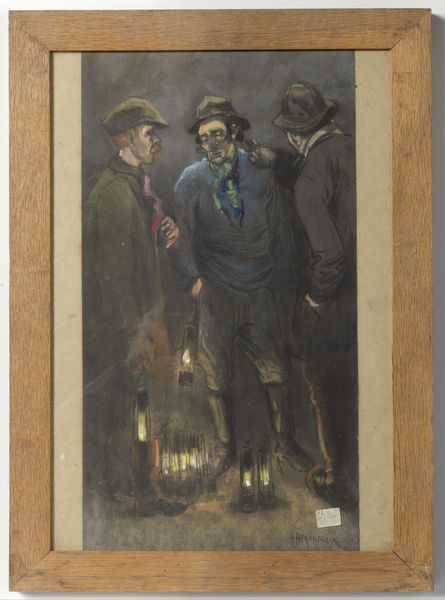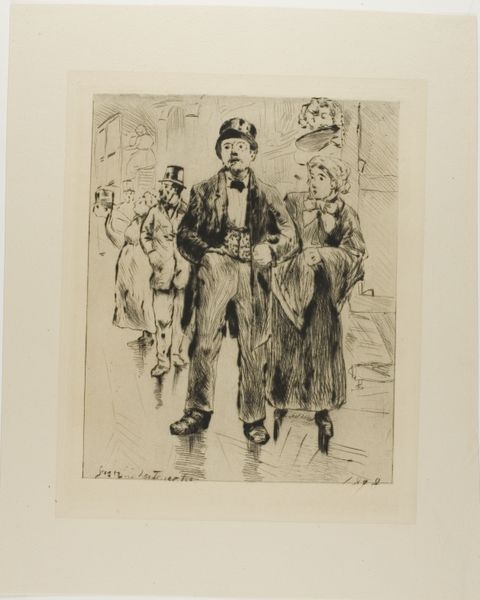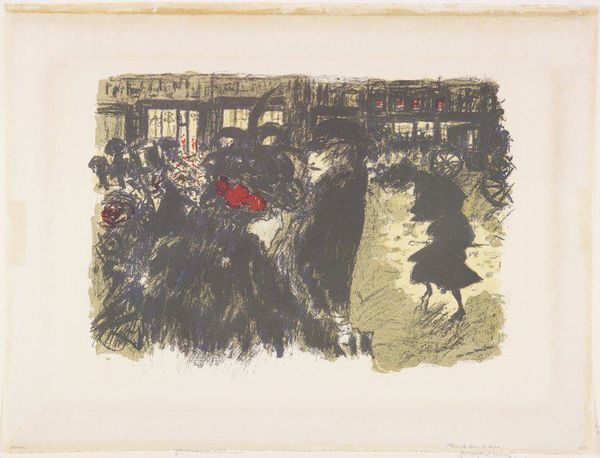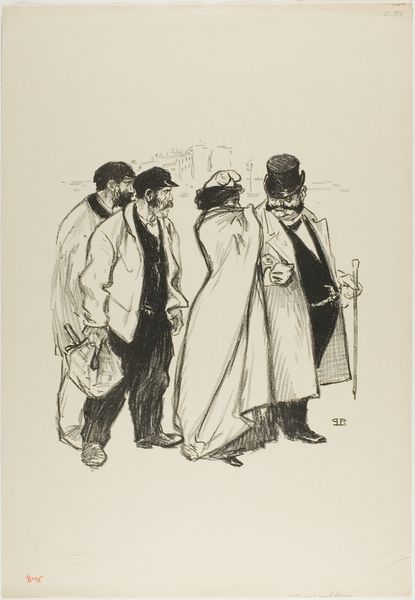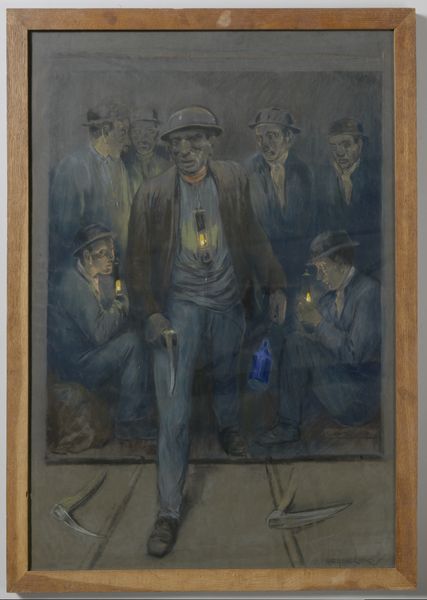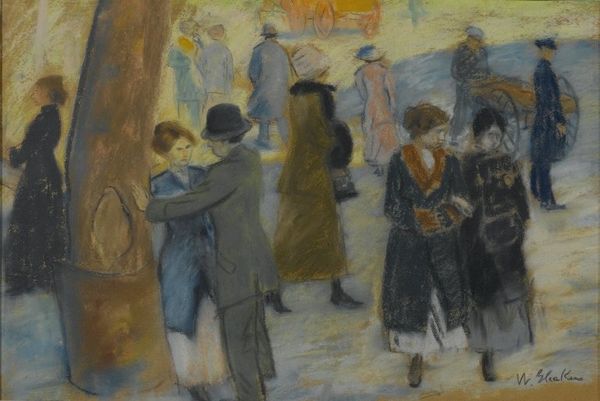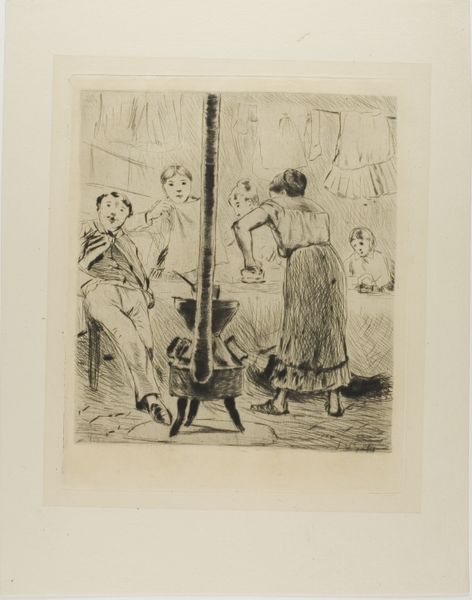
Dimensions: height 61.5 cm, width 44 cm, height 92.5 cm, width 73 cm, depth 2 cm
Copyright: Rijks Museum: Open Domain
Editor: We’re looking at "Lopende mijnwerkers met mijnwerkersvrouw" by Herman Heijenbrock, made sometime between 1881 and 1948 using watercolor, pencil, and pen. There's a pervasive gloomy mood in the work that really grabs you. What can you tell me about it? Curator: Well, immediately I'm struck by the scene of labor and its representation. The sheer volume of laborers, paired with the woman walking alongside, likely his wife, creates an immediate image of early industrial life, but let's also consider the artistic intention. Given the dates, it is likely Heijenbrock lived through significant social and artistic change. What artistic movements do you see informing this work? Editor: I'm getting a little Impressionism and maybe a dash of Naturalism? Curator: Precisely. Naturalism would focus on representing things as they appear. But the visible brushstrokes are in dialogue with the Impressionists, and the subject in general highlights the lives of working-class people, which many considered radical at the time. Heijenbrock, then, might be placing emphasis on giving those workers dignity. How would you describe the formal relationship between the figures and industrial architecture in the background? Editor: They’re dwarfed by it all, almost consumed. Curator: Precisely. It brings to mind concerns about industrial progress at the time. What was gained, and at what cost? Perhaps Heijenbrock’s painting highlights that. Editor: That’s interesting! I had considered the visual style, but not necessarily in its historical and social context. Curator: Right. Art always exists within such a context. It can make such a difference when examining it more closely.
Comments
No comments
Be the first to comment and join the conversation on the ultimate creative platform.
